I teach “Commercial Studio Lighting” at Red Rocks Community College in Lakewood, Colorado. The class is structured as much as possible to give the students experience in an environment that simulates a working studio.
Several years ago, I came up with an idea that would be the culmination of the portrait section of the class – The Vermeer Lighting project. It would test the students’ knowledge of lighting and its application in a real world situation, and at the same time give them experience in set building, model recruitment, and team building.

It would simulate an assignment given to them by a client where a certain look was required for an advertisement. In order to accomplish this, the team would have to do research and much experimentation to produce the desired result. Much of studio photography is actually problem solving, which the students quickly discovered.
Stealing Vermeer – The Vermeer Lighting Project
The project is actually called “Stealing Vermeer.” The idea for it came from my experience working in a Japanese elementary school where part of the art curriculum was to learn artists’ techniques by trying to reproduce a Master’s painting to create the same look and feel.
The thinking behind this was that students could learn much about how other artists used the tools and materials of their media through this process, and that this could lead to a “transfer of knowledge” for use in the students’ own artwork.
I decided to try this technique, with the necessary modifications to make it appropriate for a photography project. And instead of a midterm test, I would use the results of this assignment to assess their knowledge of the concepts and techniques we had learned and their ability to apply these in real life.
The assignment is to research Vermeer, the 1600’s Dutch Master, and choose one of his paintings and reproduce it. To do this students have to do casting for their models, set design to recreate the setting of the painting, costume design for their models and finally they have to analyze the lighting in the painting and recreate it with the lighting equipment that they have available to them.
The result should be as close to the original as possible, keeping in mind that the mediums of painting and photography are not the same. The reaction of the students upon receiving this assignment the first two years was an incredulous gasp.
“Surely, he has to be kidding!” Since that time, with all of the successful images that have been produced, students have approached the assignment with a certain competitiveness. “We can do even better!”
The choice of Vermeer as an artist to emulate was deliberate. Like several of the artists of his day, Vermeer is believed to have used the camera obscura to aid in his painting of realistic scenes and portraits.
The camera obscura was the precursor of the modern day camera, and was a large box or tent about the size of a walk-in closet in which the artist could sit or stand. The box had a hole on one side that may or may not have been fitted with a lens depending on the artist.
When the hole was pointed at the subject, the subject’s image would be projected on the opposite side of the box. The artist could then trace the image onto his canvas or paper, thus creating a rough sketch of what he would later fill in with paints.
Thus, it could be argued, Vermeer was also an early photographer. Since that beginning semester, the list of artists has grown to include other masters of light such as Caravaggio and Honthorst.
What students quickly learn is that the apparent simple lighting, in most cases a single window, poses some unique challenges. It isn’t as easy as it looks! Not only must the qualities of window light be reproduced using strobes, but the environment of the set or studio affects the final result.
Does light bounce around to create fill, or are the walls absorbent to light allowing for considerable contrast?
The first choice was “Lady Writing a Letter with Her Maid” by Jan Vermeer. This masterpiece painted sometime in the late 1600s has been stolen not once, (for real!) but twice in the last 25 years. I have seen it in Dublin’s National Museum.
What that experience taught me was to not take the overall color balance of the image too literally, especially when you are working with reproductions from books and the Internet. The students found two different color balance renditions in their research and both of these were considerably different from the original.
And how much had age and treatment of the painting over the centuries affected the color? As this is typically the situation, the instructions to the students is to use their common sense and create a color balance that they think is appropriate and correct.
The team choosing “Lady Writing…” took over 7 hours to set up this shot. The set was constructed at RRCC in the loft sitting area above the main entrance to the school. The wall with the window was constructed of seamless paper using an existing wall and pillar in the loft.
The window was a salvaged window from an attic that was clamped to an A/V cart. Curtains were then hung to complete the effect. The marble floor is also constructed of black seamless paper with white sheets of paper as the white tiles.
The costumes were found in thrift stores, while other objects were from homes of the participants. The painting on the wall is pastel on black paper by Troy Pfistzer, a student of the class who is also an art teacher in a public school in the area. He created it quickly to give the impression of the original from the painting.
It is tempting for the viewer of this image to assume that it must have been achieved through either Photoshop or Painter, two popular image editing software programs. The only Photoshop used was to remove a light switch on the wall, straighten the bottom line of the painting, and create marble texture onto the white paper on the floor.
The painterly effect of the image is due entirely to the quality, source, direction and ratio of the lights used. That took hours to get right.
After taking the required image, students improvised with additional poses and props. Included here, along with the final image (left) is an image by Denise Becker, which is a wonderful image in its own right. (See below right)
|
|
|
It has been at least three years since this first success. In the following years other painting techniques of Vermeer have been stolen and reproduced in this way. Last year Caravaggio’s “Judith Beheading Holofernes” was the subject of a project. Here are the before and after images of that project.
|
|
|
Here is another example, “The Procuress,” by Gerard van Honthorst. This was done two years ago.
|
|
|
What did the students learn? Not only did the students learn how to solve the problem of recreating a particular scene, but how to work together as a team. And also, that what one can accomplish is only limited by one’s imagination and hard work.
By Michael Fulks

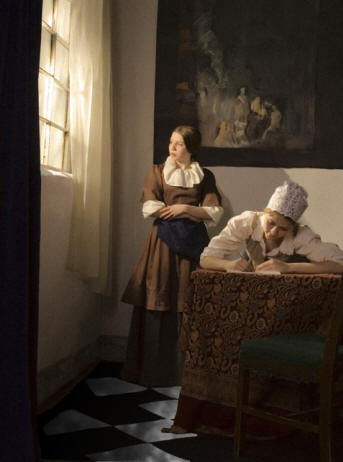
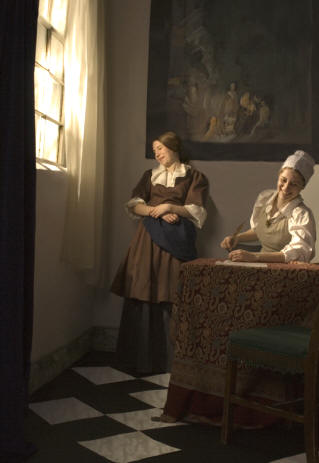
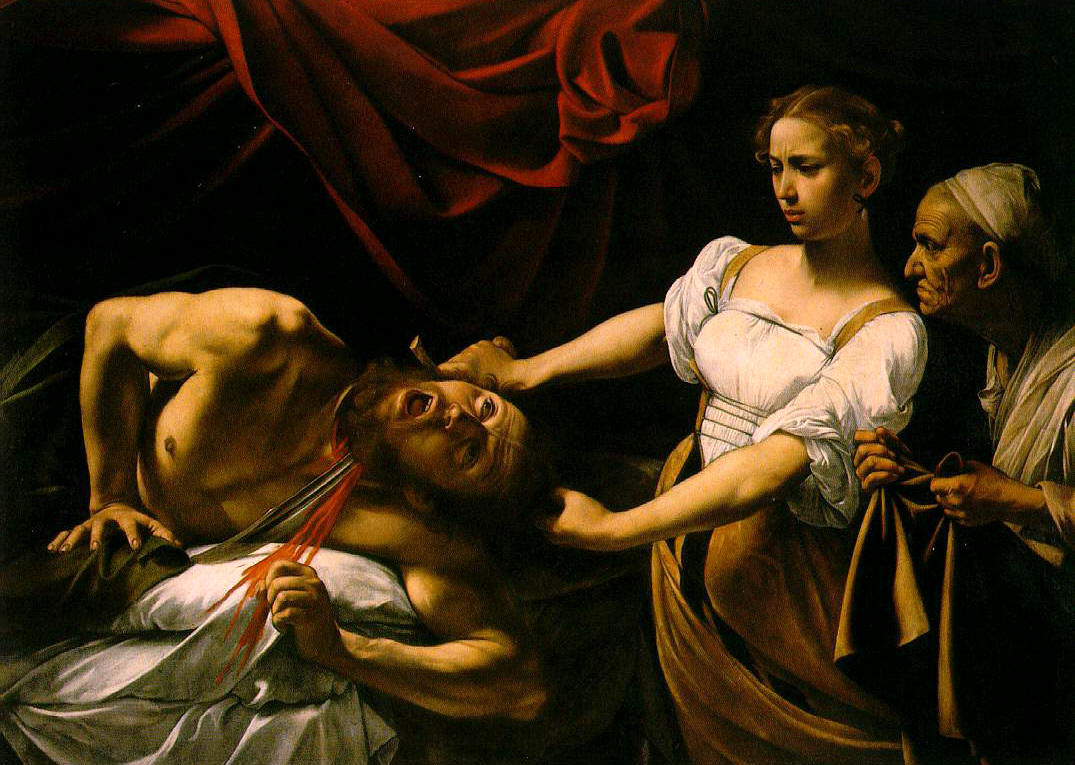
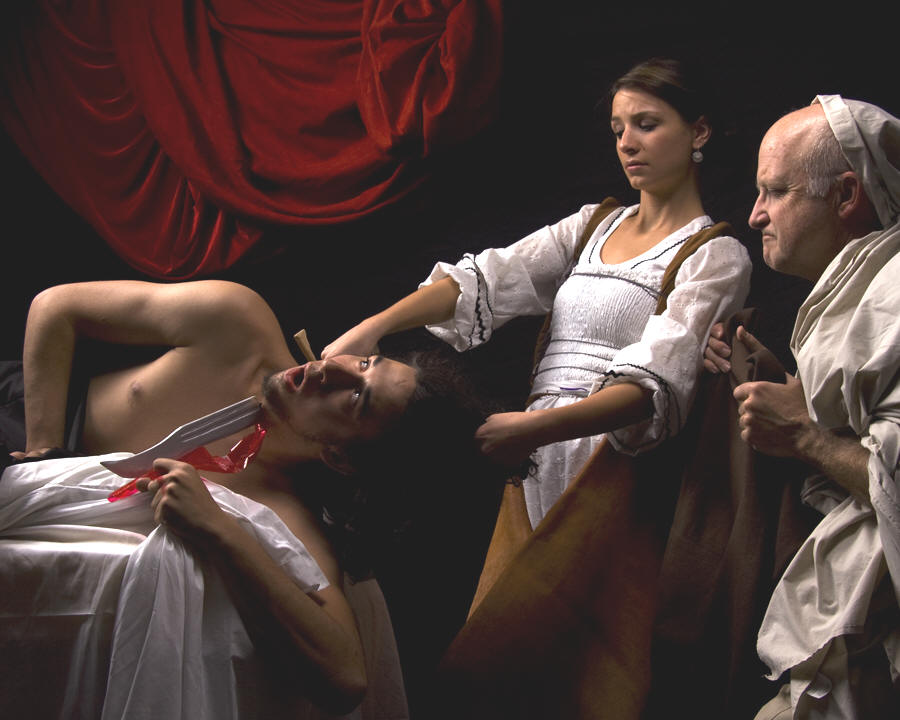
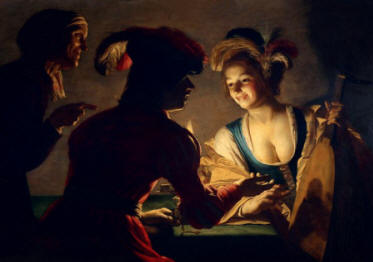
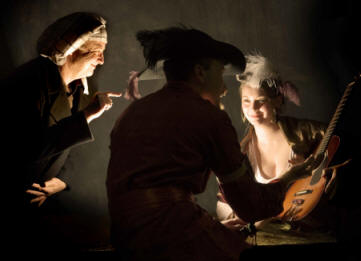
Leave a Reply